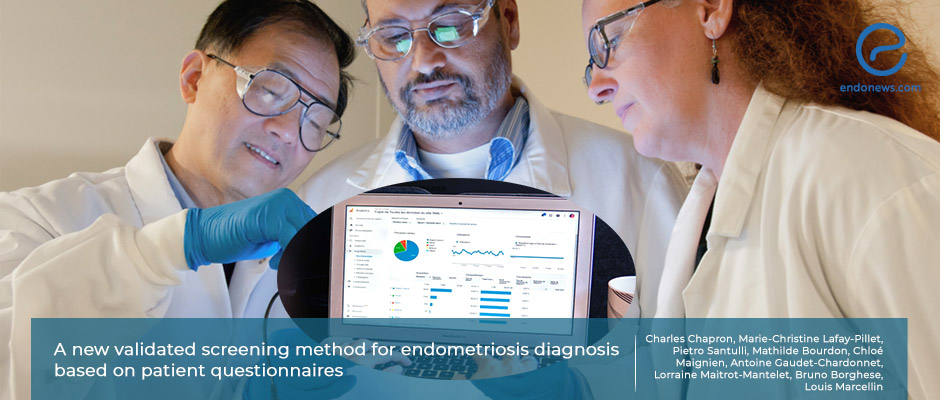How reliable are the patient questionnaires in predicting endometriosis?
May 23, 2022
New validated scores that were based on patient questionnaires can predict endometriosis reliably, study finds
Key Points
Highlight
- Identifying high-risk patients for endometriosis is crucial in providing them with an on-time diagnosis and individualized treatment with a multidisciplinary approach.
Importance
- Patient-based questionnaires are key components in treating endometriosis and they have been used widely.
- A questionnaire that predicts the probability of endometriosis and helps select the higher-risk patients is needed to overcome the delay in the diagnosis of endometriosis.
What is done here
- This is a case-control study that analyzed the data of a prospective, pre-operative patient questionnaire aiming to discover a predictive score to select the patients that are at higher risk for endometriosis.
- A study group consisting of histologically proven endometriosis patients and a control group consisting of patients without endometriosis were formed.
Key results
- Two scores were developed using the answers from the questionnaire of 8 and 5 items, respectively.
- The scores were developed using clinical data, such as the family history of endometriosis, primary sterility, body mass index, short regular cycles, Visual Analog Scale scores of pain, dysmenorrhea, dyspareunia, gastrointestinal symptoms, and urinary tract symptoms.
- These scores reliably predicted the probability of endometriosis.
Strengths and Limitations
- The strengths included a large number of patients, the accurate diagnosis based on histology and surgical exploration, the prospective collection of data minimizing the number of missing data and bias, and the external validation of the score in addition to the internal validation.
- Limitations were: 1) The patients who had surgery may not have been representative of the entire population of patients with endometriosis, and 2) the controls had gynecological surgical pathologies, which could mean that they were different from the general population.
Lay Summary
It is well known that the diagnosis of endometriosis is delayed in the majority of patients throughout the world. The burden that this brings has many effects on the patients’ lives as well as the society. The radiological developments in recent years have expedited the diagnostic process; however, radiological testing on every patient may not be practical, and new screening methods that select patients who are at higher risk need to be developed.
Chapron et al. from Paris, France, have conducted a prospective, pre-operative patient questionnaire to be able to discover a predictive score to select the patients that are at higher risk for endometriosis. The study was published in the January 2022 issue of the journal EClinicalMedicine.
The study group consisted of patients with histologically proven endometriosis, and the control group included patients who had prior surgery for benign gynecological diseases with no visible endometriosis over a 13-year period. An external validation cohort was also used. The patients were distributed depending on their lesions as superficial peritoneal endometriosis, ovarian endometrioma, and deep infiltrating endometriosis. After careful evaluation, two clinical scores were developed using clinical data, such as the family history of endometriosis, primary sterility, body mass index, short regular cycles, Visual Analog Scale scores of pain, and dysmenorrhea, dyspareunia, gastrointestinal symptoms, and urinary tract symptoms. Score I was based on 8 items by evaluating the area under the curve in multiple regression models with three levels. A second score was devised based on 5 items to minimize the self-evaluation of pain by the patients, and it also avoided parameters that were varied due to the self-evaluation of the patients. They both reliably predicted the probability of endometriosis.
The authors discussed that a patient questionnaire is a key component in treating endometriosis as it allows for earlier prediction and diagnosis. They went over the questionnaires that have been being used and added that their score is the first one that predicts endometriosis solely based on the patient clinical history. The external validation of the score is another strong point of this questionnaire.
They conclude by saying that it is important to identify higher-risk patients to provide them with a multidisciplinary approach that can give a chance for individualized therapeutic interventions for each patient. Their scores might be helpful in achieving this goal.
Research Source: https://pubmed.ncbi.nlm.nih.gov/35059616/
endometriosis questionnaire diagnosis screening

